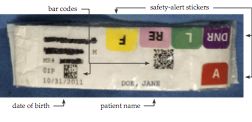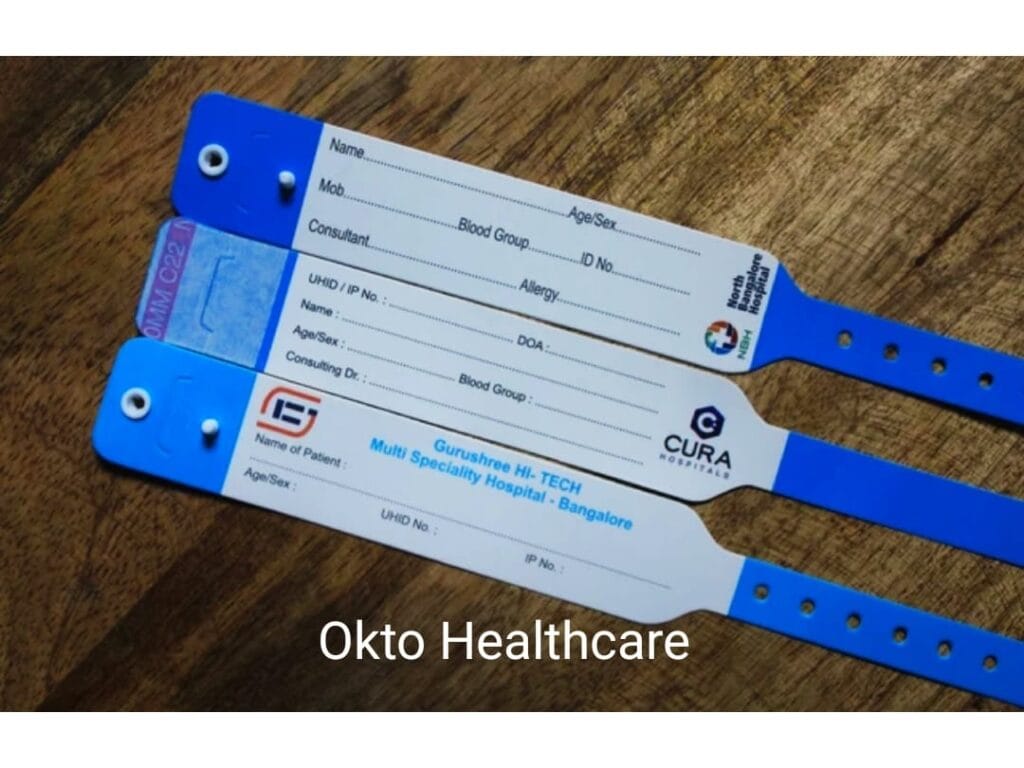Improving Client Treatment With Efficient Recognition Bands
The implementation of effective recognition bands is an essential aspect in improving client care within health care settings. As the landscape of person identification evolves, one need to consider the ramifications of these systems on total health care distribution and person outcomes.
Significance of Client Recognition
Guaranteeing accurate client recognition is crucial in healthcare settings, as it straight affects the safety and top quality of treatment offered. Misidentification can bring about serious mistakes, including administering the incorrect medication, carrying out incorrect treatments, or miscommunicating essential person information. Such errors not just threaten person security however can also lead to lawful implications and decreased count on healthcare systems.
Reliable patient recognition is essential to establishing a safe and secure setting where people receive individualized and suitable treatment. It helps with the exact paperwork of clinical backgrounds, allergic reactions, and therapy strategies, ensuring that doctor have access to vital info in all times. Furthermore, robust recognition methods aid enhance interaction among clinical team, enhancing cooperation and lowering the threat of mistakes.

Kinds Of Identification Bands
Recognition bands play a vital function in maintaining accurate client documents and improving safety and security within health care environments. Different sorts of recognition bands are made use of to provide to the particular demands and requirements of various patient populaces.

Another type is the ankle band, which is specifically helpful for babies and babies, making sure that recognition remains intact also throughout care procedures. Specialized bands, such as those for allergic reaction notifies or drop threat indications, supply additional layers of security by attracting prompt interest to crucial client conditions.
Recently, electronic identification bands have actually gotten appeal, including barcodes or RFID technology that can be checked to promptly obtain client data. These bands streamline workflows and reduce the risk of human error throughout patient identification procedures.
Benefits of Effective Identification
Effective recognition of individuals via the usage of recognition bands adds significantly to total client safety and security and care top quality. By making sure that each person is accurately identified, doctor can efficiently match clinical treatments and treatments to the appropriate individual, reducing the danger of mistakes. This is especially essential in settings with high individual turnover, where the potential for misidentification is better.
Additionally, efficient recognition bands enhance interaction amongst health care teams. Clear and exact person recognition promotes partnership and ensures link that all employee are aware of a patient's specific needs and medical background. This interaction is essential for providing coordinated care, especially in emergency situation situations where time is critical.
)
Eventually, effective recognition via making use of recognition bands not only safeguards people but additionally advertises a society of safety and security within medical care facilities (Patient Identification Band). By focusing on exact identification, healthcare organizations can enhance outcomes and enhance the total person experience
Executing Identification Solutions
While the significance of patient recognition is well recognized, the application of durable identification systems positions a facility difficulty for healthcare companies. Developing effective recognition systems requires a thorough method, including innovation, workers training, and process combination.
First, companies must choose appropriate identification technologies, such as barcode scanning, RFID, or biometric systems. Patient Identification Band. These technologies must be examined based on expense, usability, and compatibility with existing facilities. A pilot program can aid identify prospective concerns before major application
Following, extensive training for team is vital. All personnel must comprehend the importance of accurate client recognition and be competent in the use of the chosen innovations. Regular training updates and analyses can strengthen ideal methods and ensure continued conformity.
In addition, health care companies must article source establish standard treatments for patient identification across all departments, improving and minimizing discrepancies interaction. Routine audits can help determine voids in adherence to these protocols.

Inevitably, an effective application of recognition systems not just improves client safety but likewise fosters a culture of liability and diligence within health care settings, making certain regular and trusted person treatment.
Future Trends in Individual Recognition
Innovations in modern technology are readied to change patient identification practices in health care setups. The combination of biometric identification approaches, such as fingerprinting and facial recognition, is anticipated to improve precision and safety and security. These technologies can considerably minimize the danger of misidentification, ensuring that clients receive the right therapies and medicines.
Furthermore, the implementation of blockchain modern technology for patient documents is acquiring traction. This decentralized technique can provide a secure and tamper-proof technique for handling individual identities, thereby enhancing accessibility to essential details throughout various doctor.
One more fad is the increasing use mobile health applications that take advantage of QR codes for client recognition. These applications permit for real-time updates and simple accessibility to individual information, equipping health care specialists to make enlightened choices quickly.
In addition, expert system (AI) is positioned to play a vital function in assessing individual identification data, recognizing patterns, and find out this here forecasting possible recognition errors before they occur.
As these technologies evolve, they assure not only to improve person safety and security but additionally to enhance the general effectiveness of healthcare distribution systems. Accepting these innovations will certainly be crucial for future-proofing individual care practices.
Verdict
Finally, efficient identification bands are vital for boosting patient safety and care quality within health care setups. By lessening the threats connected with misidentification, these bands facilitate prompt and exact info retrieval, inevitably improving interaction amongst health care companies. The implementation of durable identification systems not only promotes a culture of security but also positions health care establishments to adjust to future trends in individual identification innovation, making sure optimum results for clients in varied clinical atmospheres.
As the landscape of individual recognition advances, one must take into consideration the ramifications of these systems on total medical care delivery and person outcomes.Effective person recognition is basic to establishing a protected environment where individuals receive individualized and ideal treatment. Inevitably, prioritizing efficient person recognition strategies not only promotes a culture of safety yet additionally contributes to boosted person outcomes and total satisfaction with health care services.
Effective recognition of people via the use of recognition bands contributes significantly to overall client safety and care high quality. The implementation of robust identification systems not just fosters a culture of safety yet additionally positions medical care institutions to adapt to future trends in person identification innovation, making certain ideal end results for patients in diverse clinical environments.